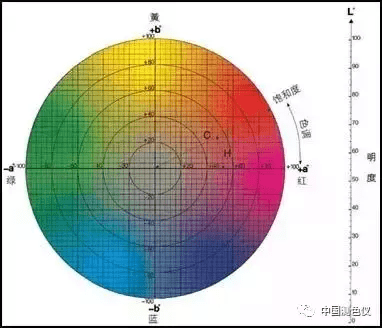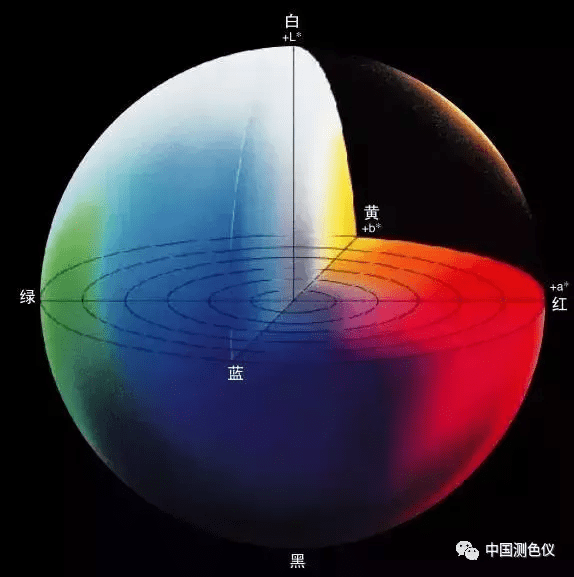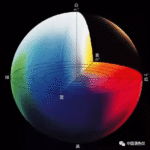Befriending color and ensuring its authenticity and unity. Given this, we need to address two key areas: first, how to define and quantify color. Second, how to manage color.
Today, let’s talk about the definition and quantification of color.
Color space: RGB
As early as 1704, Newton proposed that the essence of color is light; in 1854, Grassmann summarized Grassmann’s color mixing law; then in 1855, Maxwell proposed that the mixture of red, green and blue lights can produce colors of various shades.
So can the three colors red, green and blue be used to match all colors?
This question hinges on the question of whether all colors can be broken down into combinations of red, yellow, and blue. In other words, can the sum of red, yellow, and blue light produce all the colors humans can perceive?
Then scientists began various experiments and finally found the answer:
Yes, but also no.
Experiment on the Chromaticity Characteristics of Spectral Colors
After obtaining a spectrum of a specific color through testing, we can know the intensity value of each wavelength of this color, and also know the intensity value of the three primary colors (RGB) equivalent to it.
In this way, there are ratio values of the RGB primary colors that are equivalent to this specific spectrum.
This ratio value can be used to roughly quantify the color.
The ratio value after normalization is the so-called chromaticity coordinate.
This method can quantify all colors in nature that the human eye can distinguish. While spectral curves can also provide a unique description of color, the range from 780nm to 380nm is enormous and not very intuitive.
This naming method is unrealistic. So, not all colors can be broken down into a combination of red, yellow, and blue.
RGB color space
Color space: XYZ
But if you use the RGB ratio value to name it, only 3 data are needed (after normalization, only two data are needed).
It took humanity three hundred years to reach this point.
On this basis, a mathematical coordinate transformation was performed (the coordinates were changed from RGB to XYZ)
Tristimulus values
This is the CIE 1931 XYZ chromaticity diagram we usually see.
Of course, in this case, the “lightness” information contained in the tristimulus values is completely lost, leaving only the relative ratio information. Therefore, the CIE 1931XYZ chromaticity diagram can only show chromaticity (hue, saturation) information, but not lightness.
Color space: Munsell
In 1905, American painter Munsell summarized the experience and research results of color scientists over the past two centuries and proposed the Munsell color system.
Munsell color space
The Munsell color classification method is a purely psychological color classification method. Its three-dimensional space represents the three basic visual parameters of color, namely brightness, hue, and saturation.
Munsell color chart
As the physical color sample of the Munsell color system, the Munsell atlas has been widely used in various color-related industrial production and color science research, such as textiles, dyes, coatings, inks, medicine, chemistry, photography, color television, etc.
Color Spaces: CIE Lab and CIE Luv
To more objectively and accurately measure and evaluate color differences, the International Commission on Illumination (CIE) formally proposed two improved uniform color spaces in 1976: the CIE 1976 L*u*v color space and the CIE 1976 L*a*b color space. The values of these two spaces can be converted to each other, and the CIE 1976 L*a*b color space was the most effective at the time and has been widely used.
L represents light and dark, + is brighter and – is darker; A represents red and green, + is redder and – is greener; B represents yellow and blue, + is yellower and – is bluish.
Color space: LCh, CMYK, etc.
There are still many color spaces in use in different industries, such as LCh, CMYK, Hunterlab, etc.

CIE1976 L*c*h color space
L is the brightness value, C is the color saturation, and h is the hue angle.
The South China Marketing Center of Trinity, a subsidiary of Guangdong Trinity Intelligent Technology Co., Ltd., specializes in the research, development, production, and sales of color measurement equipment. Its products include spectrophotometers, colorimeters, gloss meters, haze meters, coating thickness gauges, standard light source light boxes, paint and ink color matching software, image test charts, and optical imaging testing solutions. Trinity’s products are widely used in the printing, coatings, auto parts, metal, home appliance, and camera industries and research institutions worldwide. Trinity holds numerous innovative patents and industry-leading technologies.
Learn More About Color Spaces With Threenh Technology
If you’re looking for color measurement solutions, get in touch with Threenh Technology. We understand the importance of color accuracy for industries of any type, and our partnerships range from food and beverage companies to biopharmaceuticals producers and beyond. We carry benchtop, portable and in-line color measurement instruments and products.
For more information or to request a quote, get in touch with the team at 3NH today.
As a global leader in spectrophotometry, 3NH goes beyond traditional color detection boundaries, providing precise solutions supported by science. 3NH delivering precise, science-backed solutions that help industries achieve superior quality and appearance control. We empower businesses to reduce waste, improve efficiency, and enhance product consistency—directly impacting the bottom line. By combining innovation, real-world expertise, and sustainable measurement solutions, we help manufacturers optimize production, minimize material loss, and meet the highest industry standards.







